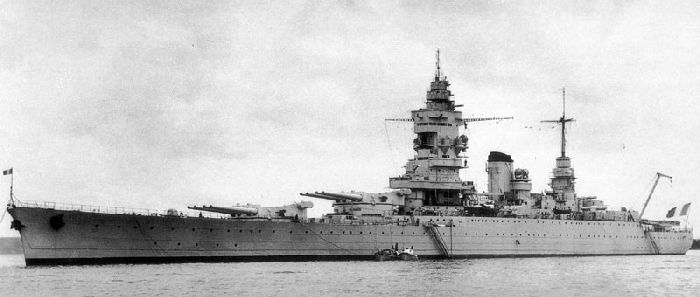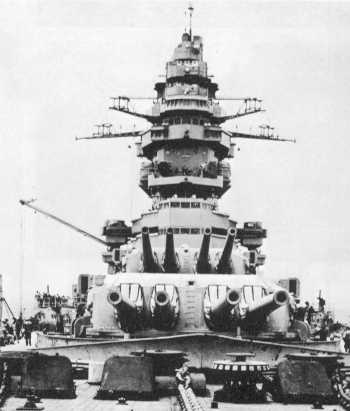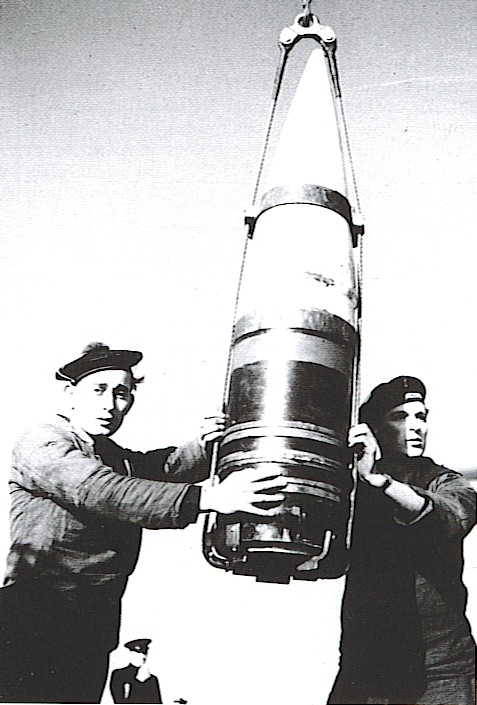| Notes:
1) These guns were sleeved in pairs.
There was apparently some adjustment between the guns in a pair, possibly
for alignment purposes. Dunkerque was the first French battleship
to have RPC for training and elevation. The turrets were powered
by Léonard electric servo-motors with hydraulic drive with Sautter-Harlé-Blondel
(SHB) RPC gear. However, the SHB equipment was found to be unreliable,
synchronization between the directors and turrets was poor and manual intervention
was needed for fine adjustment. In addition, the servo motors were
underpowered which resulted in slow tracking speeds and frequent breakdowns.
Major problems were found on trials and even after modifications the system
never worked properly. Two 100 HP training motors were provided for
each turret, with only one needed at a time. One 75 HP elevation
motor was provided for each pair of guns.
2) These mountings were developed by St
Chamond and were electrically powered. The supporting ball race contained
152 balls of 7.17 in (18.2 cm) diameter. The magazines and shell
rooms for each pair of guns were on the same deck on opposite sides of
the barbette and on two levels, with those for the port pair of guns on
the reinforced inner bottom and those for the starboard side on the deck
directly above. Ammunition supply from the magazines was by dredger
hoist, one for each pair of guns. Ammunition was transferred in the
working chamber to the gun loading cages of the upper hoists. Each
gun had its own hoist and the cages had three compartments, the lowest
one for the shells while each of the upper compartments held two charges.
Although there is only one weight given for all four turrets, it should
be noted that the rear of "B" turret on Dunkerque had 1 cm thinner armor
than "A" turret and that Strasbourg had 3 cm thicker face armor and 1 cm
thicker roof armor than the turrets on Dunkerque. For these reasons,
I would conclude that there were at least three different weights among
the four turrets.
3) The gunhouse was divided internally
by a 4 cm (1.6") bulkhead. This ran down into the working chamber
where it was thinned down to 2.5 cm (1").
4) Heavy leather blast bags were fitted
to the main gun embrasures in 1939.
5) Two 100 hp training motors were in each
mounting, either one of which could be used to train the turret.
There were two elevation motors, each rated for 75 hp.
6) The gun axis in each pair were 66.5
in (169 cm) apart while the two inner guns were 100 in (254 cm) apart.
7) These gun arcs should be regarded as
approximate as various official plans give differing figures. Some
of this may be due to concerns about blast effects on the ship fittings.
8) An electric chain rammer was carried
on an extension of the gun cradle and theoretically permitted loading and
any angle of elevation. In practice, it was found that shells jammed
in the breech at higher elevations when the other guns were firing.
As a result, loading usually took place at angles no more than 15 degrees. |


